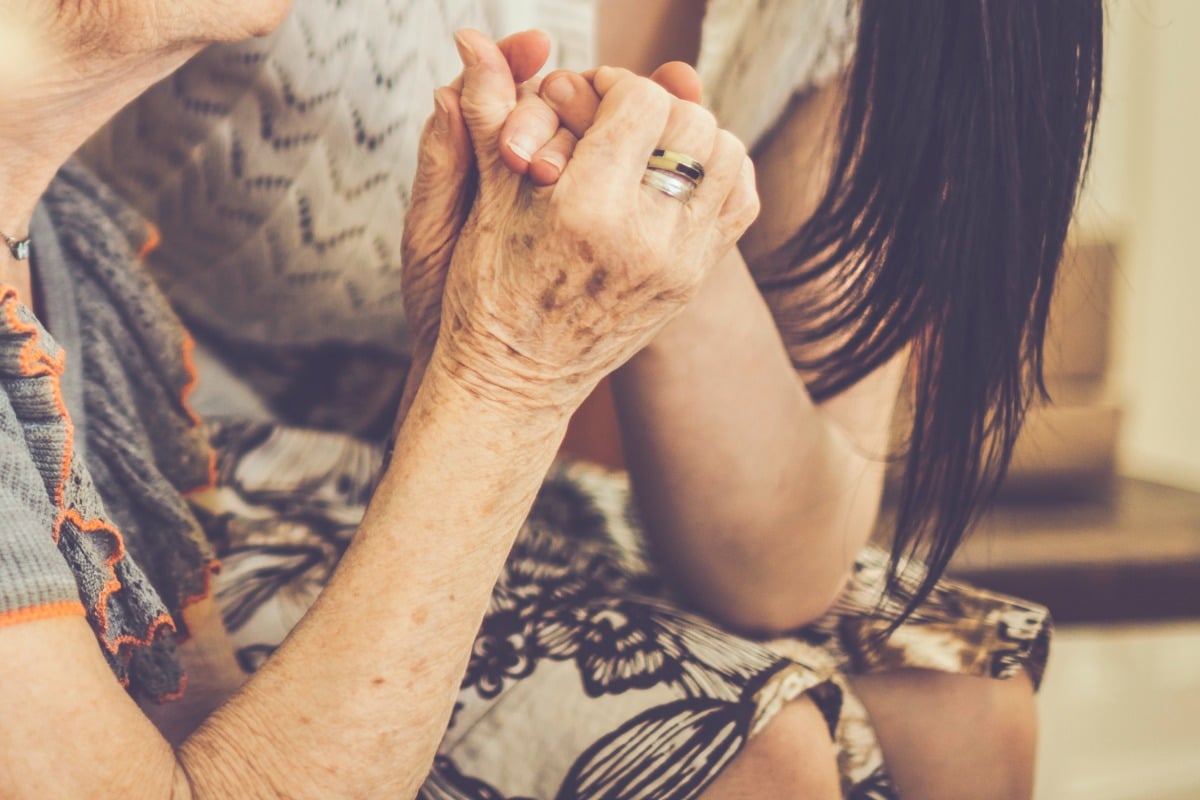
In November 2017, Victoria’s state parliament passed legislation that made euthanasia legal.
More than 18 months after it was voted in, the law finally comes into effect on 19 June, meaning Victorians will be able to end their lives via assisted dying – though there are stringent criteria and 68 safeguards. Victorian Health Minister Jenny Mikakos has described the Bill as the safest and most conservative set of euthanasia laws in the world.
Victoria is currently the only Australian state where assisted dying is legal.
In 2016, Andrew Denton spoke to Mia Freedman about his desire to change Australian law around euthanasia. Post continues below video.
Here’s everything you need to know about the new law.
What is the criteria for euthanasia in Victoria under this new law?
The criteria is very stringent.
In order to quality for assisted dying in Victoria, a gravely ill person must fit the following criteria:
- Aged 18 or older
- A Victorian resident for at least 12 months
- An Australian citizen
- Have the capacity to make the decision themselves
- Have independently made the decision at the time of being unwell – patients cannot pre-plan voluntary euthanasia or request it if suffering from dementia
- Have an incurable disease, illness or medical condition that causes “suffering to the person that cannot be relieved in a manner that the person considers tolerable”
- Have received a prognosis of less than six months to live (or within 12 months for neurodegenerative conditions, such as multiple sclerosis, motor neurone disease)
The law states a person is not eligible for access to voluntary assisted dying if they have a mental illness only, or if they have a disability only. However those with a mental illness and/or a disability can take part if they also fulfil the eligibility criteria above.
Listen: Andrew Denton discusses euthanasia with Mia Freedman. Post continues after audio.

Top Comments
At last a bit of common sense! Anyone who has gone through the trauma of a terminally ill patients last days must agree with this new decision, it is the only humane thing to do.
At one level I just don’t get all these caveats. Surely it’s like abortion - either it’s a great thing and should be available to everyone regardless of reason or age or disability. Or it’s not great and we don’t have it.
Why is the suffering of a 17 year old lesser? Why do you have to be a citizen? Why resident for a year? It’s inconsistent.
I find it personally abhorrent, and have concerns for vulnerable people but I find all these exclusions strange. Every other country starts off with these kinds of exclusions and then slowly removes them. Perhaps so we don’t get too shocked?
The my body my choice argument - which I happen to agree with.
I don't find it abhorrent at all. I don't see why physical pain trumps mental pain though which is totally ignored here - on a positive note, at least it's a start.
It seems you have very black and white thinking. The world is shades of grey. To you it is either/or. That is not real life. I find the cruelty and unchristian attitudes of some towards people with a terminal illness to be abhorrent, that people dying and in pain have less rights than animals is a disgrace, and in 2019, is truly morally repugnant and abhorrent. However I understand why there has to be caveats. For example we have limitations on the age of alcohol consumption. It doesn't make alcohol 100% safe, nor does it make alcohol 100% bad/dangerous.
Of course those who are pro forcing suffering on someone are trying to argue it both ways. On one hand they outright are against a person dying and in pain having the right to end their life - and it's usually (though not always) the fundamentalist 'christians', the vast overwhelming majority of christians and the general public thankfully support it, which is as it should be in a humane, civilised world. However when protections are put in place, those opposing it don't like that as it takes the wind out of their sails. So they have to find some angle and hence say why any protections at all? The position of those who are against a human's right to euthanasia is disingenuous to say the least and is pure black and white ideology, at the expense of genuine humanity and christian charity.
And please provide proof that even one country removes these exclusions, and if so, what were their reasons.
Their reason is that they don’t make logical sense ;) Which I fully agree with. I am a little busy just now to find the journal articles and newsheadlines but I’m sure you can find the info yourself.
https://www.theguardian.com...
In 2007 there were significant revisions to laws in the Netherlands as you can read about in the article above.